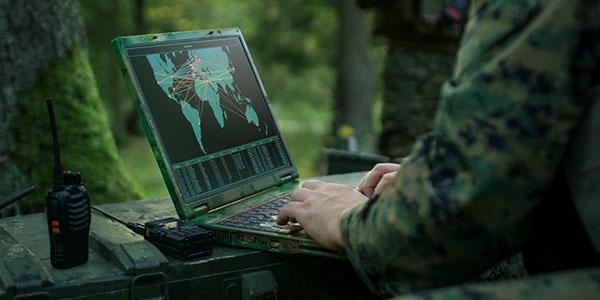Incoming: Multidomain Operations and What Innovation Means for the Future of Warfare
As the Defense Department moves to embrace more innovation, it will change the way our future wars will be fought.
My columns so far have centered on various components of modernization and innovation that I think are needed for the U.S. military to reposition itself for success on future battlefields. Emerging technologies, culture, workforce, partnerships—all play critical roles and must be recalibrated for a future that will be increasingly complex and dynamic.
As the Defense Department moves to embrace more innovation, it will change the way our future wars will be fought. Defense planners already are working to understand this in detail, and the vision they have devised is called multidomain operations (MDO).
MDO envisions future wars being executed extremely fast and incorporating a great deal of automation and networking to connect sensors to warfighters across all domains—land, air, sea, space and cyber. MDO relies on an unprecedented degree of synchronization between the armed services and coalition partners.
Military leaders view MDO as a critical capability for defeating near-peer adversaries by penetrating and then disintegrating their anti-access and area denial (A2/AD) systems and defeating their standoff capabilities. Today, MDO remains a concept in development, but soon it will become the new warfighting doctrine for our military—and, in the process, it will change the nature of modern warfare.
However, linking those domains’ assets into a powerful interconnected system of systems that can identify and defeat threats in near real time is a major technical challenge. Planners will need to collect and connect vast amounts of data from an array of sensors deployed across various domains. That information must be assessed, understood and translated rapidly into successful, integrated battlefield actions. Military cultures will need to shift from being platform-centric to coalescing around larger, resilient systems of interconnected platforms. Chains of command will be reimagined, incorporating artificial intelligence and machine learning. U.S. Air Force Chief of Staff Gen. David Goldfein, USAF, has described this envisioned state of operations as having people “on the loop” as opposed to “in the loop.”
U.S. military leaders from all services already are taking critical steps to align themselves accordingly. The Air Force, for example, has created a new officer career field focused on multidomain command and control. It has stood up a capability at Nellis Air Force Base, Nevada, to exercise and experiment with multidomain warfighting concepts, and it has created a warfighting integration capability in the Pentagon.
Last year, the U.S. Army published the milestone document, “The U.S. Army in Multi-Domain Operations, 2028,” which offers a vision for how the Army will operate as part of the joint force to “militarily compete, penetrate, dis-integrate and exploit our adversaries in the future.” The U.S. Navy and Marine Corps each have developed operating concepts built on the idea of connecting ships, submarines, aircraft and satellites into networks for sensing, commanding and engaging targets.
And in January, the three service secretaries agreed to adopt modular open systems approach (MOSA) standards for all new or modified platforms and communications systems, which will enable any sensor to be connected to any weapon platform.
While good progress has been made, extraordinarily difficult steps remain ahead to realize the MDO vision.
For one, the services will need to synchronize their command, control and communications and integrate their many platforms on the battlefield. This will likely require a joint service doctrine.
Also, multidomain command and control (MDC2) has yet to be defined and developed. This presents a host of complicated questions and complexities to sort through. I had the honor of moderating a discussion on this topic with five esteemed panel members at AFCEA’s TechNet Augusta 2019 conference. What came across loud and clear was that the thinking today around MDO is exceptionally bold and ambitious and will require the best ideas and innovative solutions from across the Defense Department ecosystem.
As one of the panelists, Maj. Gen. David Isaacson, USA, the director of Networks, Services and Strategy at Army CIO/G-6, noted: “Imagine any sensor on the battlefield, targeting any target, talking to any command and control or headquarters element and any platform in near real time. And when you think in those terms, that’s what the essential components of MDO really are. Whether it is a sensor-rich environment that targets an adversarial air platform, sea platform or a maneuver force, imagine the ability to bring to bear any platform from any other service or coalition partner to engage it and produce the desired effects. Imagine the interconnectivity that is required for that to occur—it is, in my judgment, unprecedented.”
The goal here is nothing short of a moonshot for the military community. And we all must step up to bring our strengths and best ideas to bear to see it through.
Lt. Gen. Susan Lawrence, USA (Ret.), is managing director for the Armed Forces Sector, Accenture Federal Services.
She previously served as the CIO/G-6 for the U.S. Army as well as the commanding general for the Army’s Network Enterprise Technology Command (NETCOM).





Comments